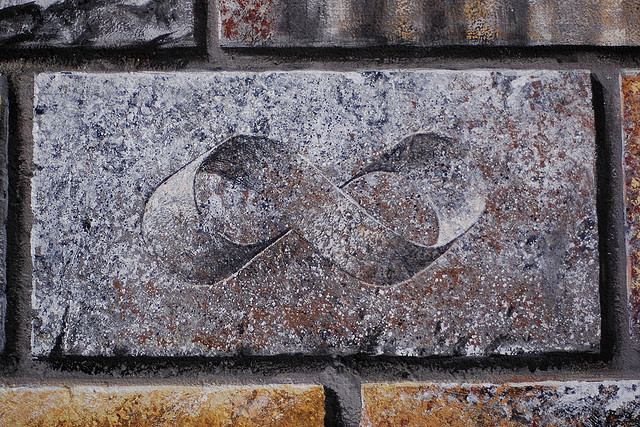Is infinity a myth?
 Infinity is something that never appealed me. I find it a scientific excuse to surrender when you fail to explain something scientifically. Have been asking this question since school days – “Where does the universe end?” and obvious answer that I used to get is “Its infinite”. By no means am I challenging the complex equations and laws of science that are based on the assumption of infinity. My knowledge is limited to that of a school student, having shifted myself to human biology by joining medical school. I have been a curious student of science with special interest in physics and mathematics but I couldn’t take up the higher studies that might probably have answered the number of inquisitive queries I had as a kid.
Infinity is something that never appealed me. I find it a scientific excuse to surrender when you fail to explain something scientifically. Have been asking this question since school days – “Where does the universe end?” and obvious answer that I used to get is “Its infinite”. By no means am I challenging the complex equations and laws of science that are based on the assumption of infinity. My knowledge is limited to that of a school student, having shifted myself to human biology by joining medical school. I have been a curious student of science with special interest in physics and mathematics but I couldn’t take up the higher studies that might probably have answered the number of inquisitive queries I had as a kid.
So here is one such query. If I am fortunate to have an expert on this field as a reader please be kind to me while commenting. I might be a stupid while asking this question but I am a school going kid as far as the subject in question is concerned.
During school days we were taught the Universal Law of Radioactive Decay which mathematically proves that radioactivity is a continuous and spontaneous process that is endless.
The Law of Radioactive Decay:
Radioactivity is a spontaneous and continuous process and the rate of decay of radioactive substance is directly proportional to the amount of radioactive substance.
Half Life Period:
The decay of radioactive substances is exponential and so the time required for decay of radioactive substance to its half remains constant and is called as half life period. The half life period is calculated using the formula.
t1/2 = 0.693/λ (t1/2 = Half Life Period, λ – Decay Constant)
Radioactivity is endless:
As per the law, the amount of un-decayed radioactive substance when plotted against time is asymptote to X axis. This mathematically means the time required for complete decay of radioactive substance is infinite.
The formula:
The relationship between the time for decay, amount of radioactive substance at baseline and that after decay for time period (t) can be expressed using the formula –
t = 2.303/λ * log (No/Nt)
(t = time for decay, λ – decay constant, No – amount of radioactive substance at baseline, Nt – amount of radioactive substance at the end of time period t)
In the above formula if we try to find out time needed for complete decay of radioactive substance (by putting Nt as zero), the result comes out to be infinity. This result is very well in accordance with the law suggesting that radioactivity is endless. The substance gets decayed to half in a fixed amount of time (half life) and half of nothing can be zero.
The flaw in the law:
The above discussed law appears very much convincing when the amount of radioactive substance is measured in terms of its mass. The mass can be halved indefinitely. But the mass of any substance is made up of number of atoms or molecules. By halving it repeatedly we would ultimately land up to unity, which cannot be halved.
By using the below formula, a finite time needed to the decay of a radioactive substance up to level when only last atom is left undecayed can be calculated.
t = 2.303/λ * log (No)
In the above formula, No is the number of atoms of the radioactive substance at baseline. The number of atoms can be easily calculated by using Avagadro’s Number. The number of atoms in one mole of any substance is constant and is equal to 6.022 X 10ˆ 23.
Example:
So as to get the easily imaginable duration as results, let us consider example of Radon 222 (Rn 222). This radioactive isotope of radon has a short half life period of 3.8 days. From the half life period the decay constant for radon turns out to be (0.693/T = 0.693/ 3.8) 0.182 day -1. One gram of radon would contain (6.022 X 10 23) / 222 i.e. 2.71 X 10 21 atoms.
Putting all these values in the above formula time needed for decay of 1 gm of Rn 222 to the level of having only one last atom undecayed comes out to be 271 days. At the end of 271 days only one atom out of 1 gm of Rn 222 remains undecayed. It can either get decayed or may remain undecayed. Anyhow the radioactivity would end. In the above example if we try to find out amount of Rn 222 remained undecayed after 300 days, though we would get a mass of radon, but that would be subatomic.
The question
Applying the formula that is widely used in radioactivity, we could find a finite period for complete decay of Radon which is expected to be infinite. Its very much possible that there is something wrong in my understanding about radioactivity. But I am yet to get someone who could explain the same.

